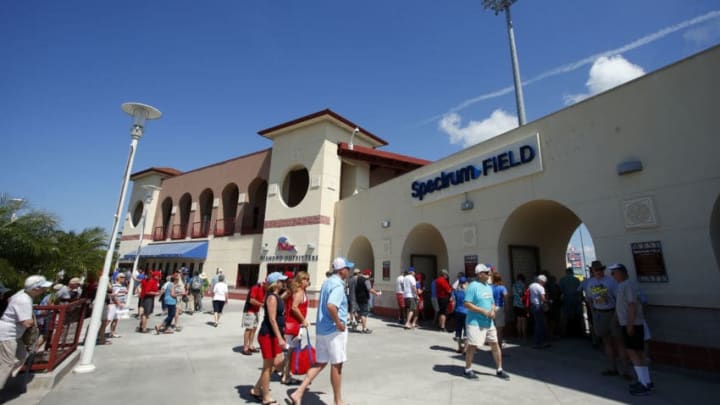
After entering Phillies’ camp with a purpose, players without a definite position know their fate is not only in the hands of general manager Matt Klentak but also on the ball they throw and the bat they swing.
Friendly competition:
Before a hurler fires the first pitch of the Grapefruit League, the Philadelphia Phillies will open two hypothetical doors before Friday: rounding into shape and battling for a roster spot and playing time. The second one is the threshold of a tomorrow unrealized.
"IN OTHER WORDS: “Be thankful for quality competitors who push you to your limit.” – Michael Josephson"
Aside from the obvious stars in the Opening Day lineup, the Phils will also have some unchallenged regulars who will enjoy their first at-bat in Atlanta. For instance, Maikel Franco and J.P. Crawford will man the left side of the infield for April and May.
However, right field and catching are the maybes. And while those five competitors will scratch and claw to succeed, the two underdogs are Cameron Rupp and Andrew Knapp.
The rotation has an ace, two experienced starters and two open slots. That stated, the competition will be fierce for those bottom two rungs, and the question is whether a flamethrower like Nick Pivetta or a finesse pitcher like Ben Lively will impress management enough in March. Who will win those slots?
In the bullpen, two signed setup men are joining five holdovers, and a handful of non-roster invitees could leave an impression on a coach, the skipper or an exec. Of the latter, Francisco Rodriguez is 2018’s version of a previously dominant closer hoping for one more campaign.
The long shots waiting in the wings are Scott Kingery and right-hander Thomas Eshelman, but they won’t be with the Triple-A Lehigh Valley IronPigs for even the entire first half. No, they’re only in this category for spring training.
As for the regulars, they have the right side of the infield, center field and left field. They’ll work on honing their skills and preparing themselves for the long 162. How many bombs will Rhys Hoskins launch when it counts?
